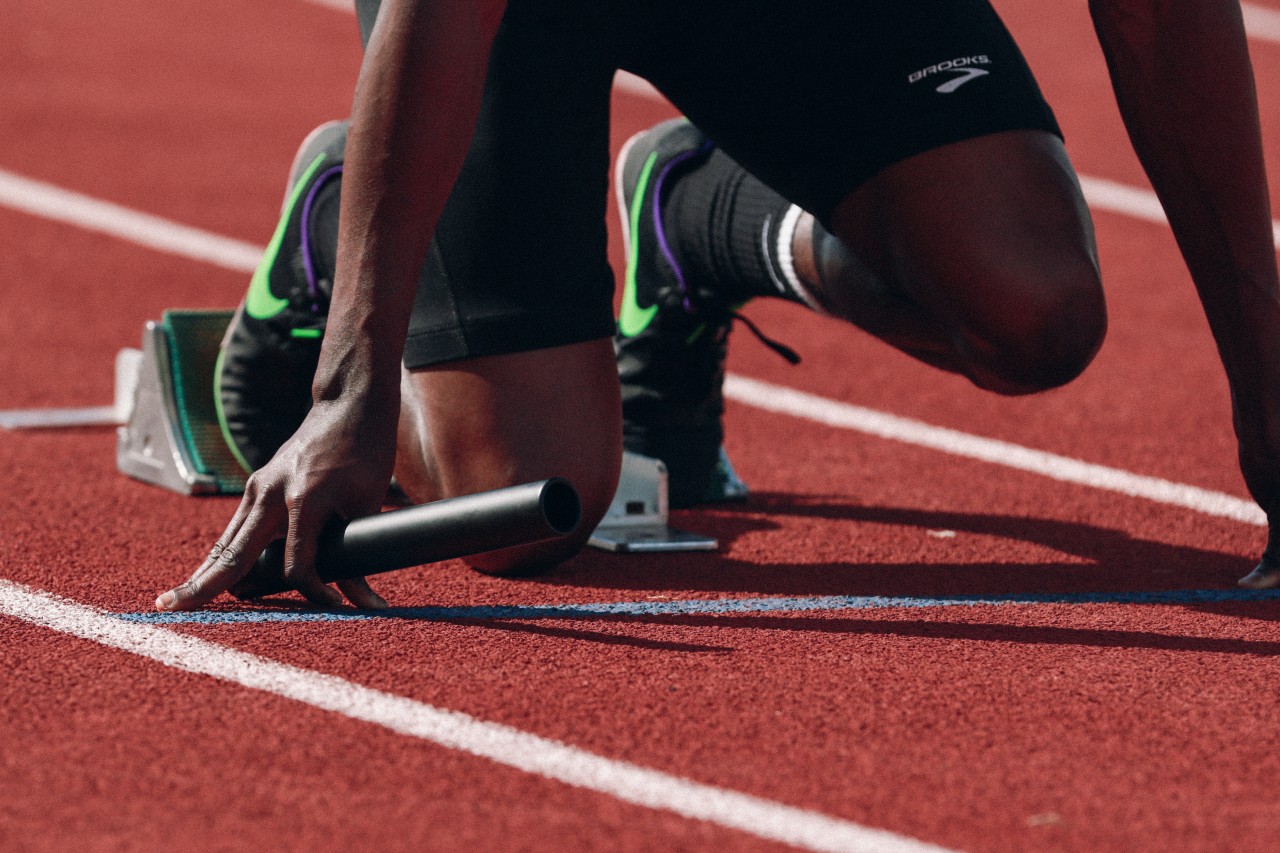Is Your Big Toe Limiting Your Running Speed?
Whole Body Influence
The big toe is often a forgotten and neglected component of the human body. Proper range of motion in the big toe is vital to creating stability as running speeds increase. Ideally, the big toe needs to dorsiflex (i.e. the toe bends toward the face) at least 45 degrees. However, as speeds increase from walking to running, 65 or more degrees of dorsiflexion is ideal. Lack of big toe range of motion can cause problems local to the foot such as plantar fasciitis,¹ and is even noted with over head athletes such as baseball pitchers and cricket bowlers.²
Running is a very linear sport. This means that in order to run efficiently, the joints of the body need to stay moving straight forward and backward. Any motion outside of this path costs extra energy, decreasing metabolic and mechanical efficiency, leading to potential injury. Now there are plenty of sports that require rotation, and yes, long distance running and sprinting will as well, but that will muddy the waters and lead to a very lengthy blog. So let us save it for another day and get back on track.
Importance of Big Toe Motion
The big toe needs to dorsiflex during the push-off phase of gait. As speeds increase, the importance of further dorsiflexion becomes apparent to clear adequate hip extension and achieve faster speeds. Without increased dorsiflexion of the big toe, the hip range of motion into extension will be limited in the sagittal plane (forward and backward). Hip extension is important in achieving higher speeds because it allows the body’s center of mass to reach a point farther forward in relation to our back foot. This process creates a sensation of falling, which the brain will register as a threat. Law of self preservation requires the brain to keep you from falling over and hurting yourself. As a result, certain muscles pull your swing leg forward quickly in order to catch the body from falling forward. If the brain and body are not processing this information fast enough, the body will collapse. But in order to achieve faster speeds this falling-forward process has to occur.
Video Evidence
Here is a video of
. Pause the video at 36 seconds. The very last body part that leaves the ground are the toes; in particular, the big toe. It is the very last toe to leave the ground during faster speeds. In the video, you can see there needs to be adequate dorsiflexion to achieve these speeds efficiently. If the toe range of motion in limited, a runner will leave the ground early resulting in decreased power and performance.Here is a video of
. Again, pause at 39 seconds into the video. You can see his form is very similar to that of Asafa Powell from the first video. Form will differ depending of the speed the runner is wanting to achieve. Look at the range of motion in his toes and the amount of hip extension he is achieving.Summary
In ‘toe-tal’, there are many limiting factors that can have an effect on running performance and speed. The above two runners are trying to achieve different speeds, yet the concept of how to achieve those speeds is very similar. Adequate big toe dorsiflexion improves hip extension, which gets the center of mass of the body farther forward, requiring the swing leg to move quickly to catch the body from falling. This is how faster speed is achieved and big toe dorsiflexion could be the limiting factor preventing this for you.
References
1) Aranda, Y., & Munuera, P. V. (2014). Plantar Fasciitis and Its Relationship with Hallux Limitus. Journal of the American Podiatric Medical Association, 104(3), 263-268. doi:10.7547/0003-0538-104.3.263
2) Dennis, R. J., Finch, C. F., Mcintosh, A. S., & Elliott, B. C. (2008). Use of field-based tests to identify risk factors for injury to fast bowlers in cricket. British Journal of Sports Medicine, 42(6), 477-482. doi:10.1136/bjsm.2008.046698
About the author
Dr. Keith Sparks is an award-winning chiropractor, functional medicine expert, and the co-founder of ICT Muscle & Joint Clinic. Dr. Sparks’ emphasis of care originated within the fields of rehabilitation, soft-tissue therapies, and chiropractic. To date, he has brought this unique combination of skills into union with functional medicine. The sole purpose of intertwining these distinct skills, knowledge, and services is to provide incomparable care to his local community. Dr. Keith Sparks is often seen in the Wichita, KS community speaking at business events and teaching health and performance classes.
